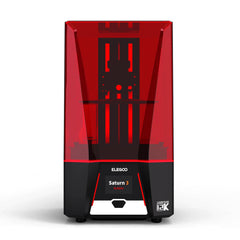- Home
- Design Showcase
- 3D Printing an Ecosystem: Diving into Artificial Reef Restoration
Design Showcase

This month we’re showcasing another amazing design by one of our favorite creators, DaveMakesStuff. We love all of Dave’s work, but what makes this particular design so incredible is that it’s being used to help preserve our oceans and their ecosystems.
Not too long ago, a diving team in the Pacific Northwest got in contact with Dave. They let him know that they had found his designs online and that they were using one of his gyroid sculptures for their research in artificial coral reef restoration. They were strapping these intricate geometric prints together and placing them around the sea, watching closely to study how the local marine life interacted with them. It turns out we’re not the only admirers of Dave’s work, because fish seem to love his prints as well.
As makeshift reefs (AKA fish homes), Dave’s structures were a big hit. With that being said, they weren’t quite perfect yet. If they wanted the prints to work as optimal habitats for their fishy friends, the divers knew that they would have to alter the files a bit. This is where Dave comes in. They reached out to him, asking if he could lend them a hand, and he got right to work.
Design Goals
Dave knew he needed to make a few changes. Firstly, he didn’t want the researchers to have to strap the structures together anymore, so he designed a way for them to interlink. He added interconnecting slots to the new modules, designing them so that there could be enough tolerance for them to connect easily underwater. These divers will be adjoining them in less-than-ideal circumstances, so ease of use is of the utmost importance.
Furthermore, Dave knew that if these structures were going to connect, then marine life would have to be able to swim freely from one module to the next. To accomplish this, Dave created an algorithm that can adjust the size of the surface openings, making it so that fish can better traverse through them. Large perforations on the outside will lead to smaller ones on the inside, allowing vulnerable creatures to escape from larger prey. Through these alterations, Dave planned to make life easier for both the divers and the animals.
Once he was satisfied with the design, he prepared two of his new modules for print. Dave imported his file into Chitubox, prepared it, and sent it off to his trusty Elegoo Saturn 2 printer. Let’s see how he did.
The Printing Process
For his print, Dave went with the Elegoo Standard 8k Resin, in a stylish space grey colorway. Initially, Dave ran into some problems, because he had hoped that he might be able to print the structures directly onto the Saturn’s build plate. This didn’t work out though, with one of his two modules not sticking to the print bed.
For his next attempt, he added a few much-needed supports, and he tilted the piece to better optimize the printing procedure, and ensure print bed adhesion. None of us are strangers to the odd misprint now and then, but luckily for Dave and other Saturn 2 users, the printer comes equipped with a super handy pause function that you can use to keep an eye on your prints. Simply click the pause button, and the printer will finish off its current cycle, lift the build plate, and it will allow you to see the progress of your project in real time. When you want to continue the print, press the resume button and the Saturn II will get right back to it, seamlessly continuing where it left off. Dave swears by this function and claims that pausing it has never once resulted in a misprint.
Comparing the New with the Old
After the print was completed, Dave reviewed the new modules, comparing them to the original gyroid sculptures the divers had been using. The new designs were a huge upgrade. The original prints weren’t able to connect, but these new ones worked like a charm, sliding together satisfyingly for a nice, snug fit.
Furthermore, Dave’s new algorithm will give the divers total control over the parameters of the surface holes, allowing them to alter the artificial reefs as their research deems fit. Dave did notice that the one structure he printed on the build plate developed a bit of a bulge at the bottom, or an “elephant’s foot” as he called it. While the print was still successful, this type of formation can compromise the interconnectivity of the modules, so it’s always better to provide these prints with the proper supports that they need.
In the future Dave wants to tweak the design further, making the connections even easier for the divers, while also allowing for the modules to stack vertically.
Conclusion
When Dave originally designed these impressive, mathematically complex gyroid sculptures, I’m sure he wasn’t expecting them to be used on the ocean floor. Luckily for his diver friends, Dave was able to alter his original files to make them even more suitable for the housing of marine life. Now sea creatures big and small will be able to call these structures home, swimming freely between these 3D printed modules.
Using Dave’s work, researchers can help restore our oceans’ coral reefs, bringing balance back to these delicate ecosystems. Thanks to DaveMakesStuff and his continued 3D printing projects, there are going to be a lot of cozy fish out there soon. Let’s hope it all goes swimmingly.




